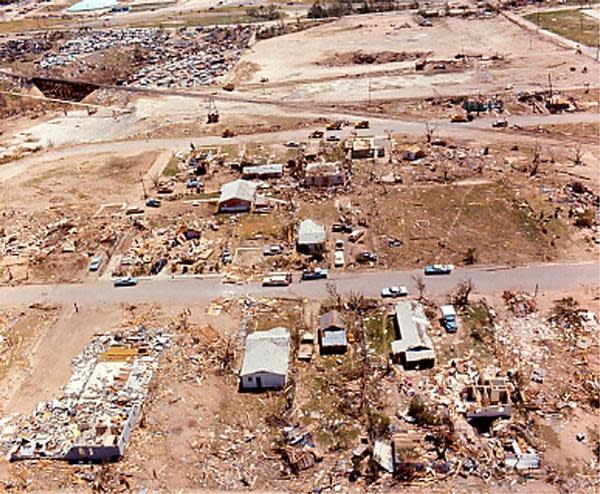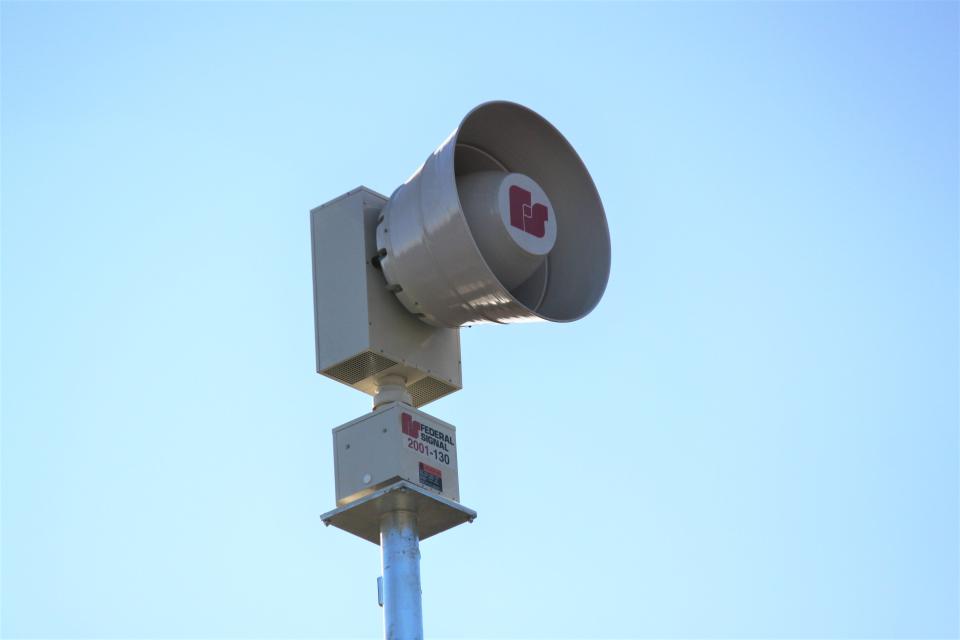Be on the watch: A look at Lubbock, West Texas tornadoes and how to be prepared
The shriek of the sirens and howling winds set the stage for a natural event that many West Texans pray they never have to experience in their lifetime.
While Lubbock's system of outdoor tornado warning sirens is relatively new, the threat of tornadoes is one the community is all-too familiar with, with May 11, marking the 53rd anniversary of 1970 tornado that left 26 people dead and much of the city's downtown and surrounding neighborhoods heavily damaged.
Since then, weather patterns have changed - with many experts agreeing tornado alley has shifted eastward. But tornadoes and severe weather obviously remain a threat on the South Plains and West Texas. Here's a look at the data, and how to prepare for the next tornado and severe weather.

When is tornado season in West Texas?
May is the middle of tornado season for Texas, and has historically seen the most devastating tornadoes in our region.
"We typically think of tornado season out here in West Texas anytime from April 15 to June 15 or so," said Justin Weaver, meteorologist-in-charge for the National Weather Service in Lubbock.
West Texas is unique for having a well-defined tornado season, but that does not mean tornadoes cannot happen outside of this time frame.
How are tornadoes categorized?
Tornadoes are measured on the Enhanced Fujita Scale, which replaced the Fujita Scale back in 2007.
The scale measures wind speeds of tornadoes by looking at the damage caused on the ground after it has dissipated. They are ranked from EF0 to EF5.
EF0 - light damage with wind speeds of 65-85 mph.
EF1 - moderate damage with winds of 86-110 mph.
EF2 - considerable damage with winds of 111-135 mph.
EF3 - severe damage with winds of 136-165 mph.
EF4 - devastating damage with 166-200 mph.
EF5 - With winds of over 200+ mph are the most devastating tornado on the scale.
A recent addition to the scale is an EFU tornado — an unidentifiable tornado.
"That happens a lot now because of all the chasers and spotters that are in the field," Weaver said. "We know there's a tornado — we pretty much get a video of it or pictures of it, but there's not always a lot of damage."
When was the last time Lubbock County had a tornado?
According to data from the National Oceanic and Atmospheric Administration's National Centers for Environmental Information, Lubbock County's last tornado was on March 12, 2021, in Caldwell. It was an EFU.
In total, Lubbock County — since 1950 — had 71 confirmed tornadoes, with 29 causing damage.
Of the 73-year time frame, Lubbock County had only one EF5 category — May 11, 1970.
Here's a look at the data for Lubbock's surrounding counties, since 1950:
Lamb County: 61 tornadoes, with 23 causing damage. The last tornado was an EFU in Sudan on May 16, 2021.
Hockley County: 51 tornadoes, with 17 causing damage. The last tornado was an EF2 in Cobble on May 23, 2022.
Terry County: 30 tornadoes, with 10 causing damage. The last tornado was an EFU in Johnson on May 23, 2019.
Hale County: 93 tornadoes, with 44 causing damage. The last tornado was an EFU in Hale Center on May 26, 2021.
Lynn County: 33 tornadoes, with 11 causing damage. The last tornado was an EF1 in Draw on May 5, 2019.
Floyd County: 40 tornadoes, with 16 causing damage. The last tornado was an EFU in Dougherty on March 28, 2017.
Crosby County: 37 tornadoes, with 18 causing damage. The last tornado was an EFU in outside of Crosby on June 22, 2020.
Garza County: 18 tornadoes, with 4 causing damage, The last tornado was an EFU in Graham on May 23, 2020.
Weaver said the last time the Panhandle-South Plains region had a deadly tornado was in Happy in 2002, which resulted in two deaths.
What was the deadliest tornado in Lubbock?
At 8:30 p.m. on May 11, 1970, the first of two tornadoes touched down in the downtown area. Those tornadoes would ultimately claim the lives of 26 people, and forever change the landscape of the Hub City.

More: Tornado of May 11, 1970, was a century mark storm
The tornado also helped inspire Theodore “Ted” Fujita to create the Fujita Scale — the predecessor of the EF Scale, which was also developed by Texas Tech Professor Kishor Mehta.
2021 was the 51st anniversary of the May 11th tornadoes and was commemorated by the city with a memorial to honor those who died and those who helped rebuild. The event would have happened in 2020, but was delayed due to the COVID-19 pandemic.
What's the difference between a watch and a warning?
Understanding the difference between a tornado watch and a warning is vital to staying alert when severe weather comes.
"A tornado watch means that conditions are favorable for the development of tornadoes," Weaver said. "It doesn't necessarily mean that we're going to have tornadoes, but this means conditions are favorable."
Individuals should start preparing to seek shelter when a watch has been issued.
A tornado warning means a tornado has been seen or has been indicated by weather radar, and individuals should seek shelter immediately.
How can you be prepared?
On average, the NWS Lubbock office will see around 18 tornadoes annually, but that number can vary greatly from year to year. Some years, they have seen one or two, other years 30-40.
"We do continue to have large tornadoes out here in West Texas," Weaver said. "We've just been very, very lucky in the last 21 years that they haven't hit any communities. So don't be complacent — don't think it can't happen to you."

Weaver provided some advice on how people can be ready and stay safe this tornado season.
How can I stay alert when it comes to severe weather?
Having multiple ways of getting weather warnings is beneficial for individuals during a severe weather event.
"Everybody thinks they're gonna get their warning on their cell phones, and they might, but they might not," he said.
Weather radios, listening to TVs, or other apps can provide people with enough ways to receive vital information.
Last year, the City of Lubbock started putting up tornado sirens in 45 locations. This is an additional measure to ensure people who are outdoors when the weather takes a turn for the worse.
Individuals can also sign up for LBK Alerts to be informed about severe weather in the City of Lubbock.
How do I prepare for a tornado?
"The time to figure out where you're going to go when there's a tornado warning is not when the tornado is coming up Marsha Sharp Freeway — it's now," Weaver said.
Individuals should think about the lowest floor of the building with as many walls between them and the outside when they need to seek shelter. That could be a basement or on the ground floor. Most interior closets or bathrooms are typically good shelters.
Individuals can find more resources at ready.gov/make-a-plan when it comes to creating a plan for themselves and their families.
If individuals have a mobile home, they are advised to abandon it and seek shelter in sturdier buildings.
"We see a lot of fatalities in mobile homes as opposed to regularly built homes," Weaver said.
If caught in a car, seek shelter in a safe location or abandon the vehicle and lie flat in a ditch.
Weaver said never try to outrun a tornado because you never know where it's heading.
When individuals have identified where they need to go, they should remember to bring their shoes and something to protect their heads, as many fatalities are caused by flying debris.
More information about safety rules from the NWS can be found at www.weather.gov/bmx/sps_torsafetyrules.
This article originally appeared on Lubbock Avalanche-Journal: Lubbock, West Texas tornadoes and how to be prepared

